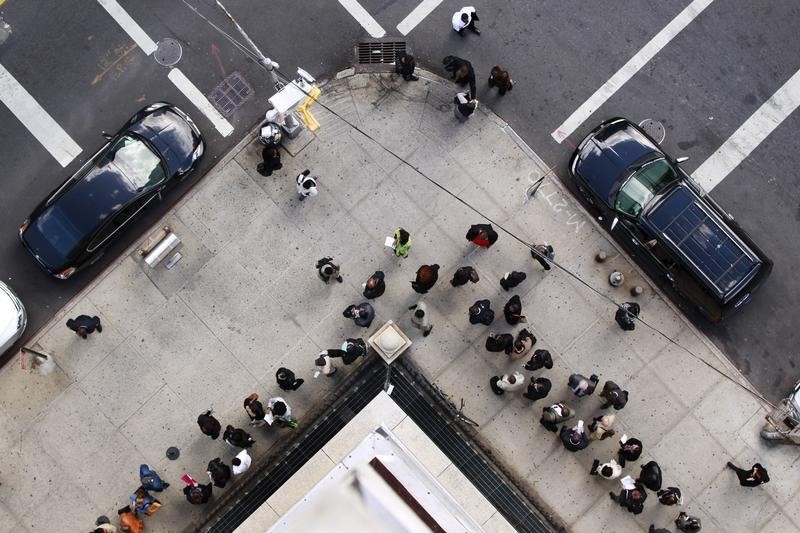

© Reuters.
Investing.com – The U.S. economy added more jobs than anticipated in November, in a sign of lingering robustness in the American labor market that could factor into how the Federal Reserve approaches its future interest rate decisions.
increased by 199,000 jobs last month after rising by 150,000 in October, according to data from the Labor Department’s Bureau of Labor Statistics (BLS). Economists had estimated that payrolls would climb by 180,000 roles. Job gains came from areas like health care and government in particular, the BLS said, while the end of protracted automotive industry strikes in November led to more positions in the manufacturing sector.
, a key gauge of wage growth, rose at a monthly pace of 0.4% versus October, accelerating from a previous reading of 0.2% and faster than predictions of 0.3%. The in the world’s largest economy, meanwhile, unexpectedly ticked down to 3.7%.
Friday’s data complicates an emerging narrative that the Fed’s unprecedented period of monetary policy tightening may be working to cool labor demand.
Earlier this week, separate figures showed that job openings touched an over 2-1/2-year low and fewer workers resigned from their positions in October, while private employers added less roles than anticipated last month. However, in a note to clients, analysts at Evercore ISI argued that the hints of a weak employment report suggested by these other data points were “not correct.”
Loosening the jobs market has been a major focus of the Fed’s move to lift borrowing costs to a range of 5.25% to 5.50% — the highest mark in more than two decades. In theory, a slowdown in demand for workers could alleviate some upward pressure on wages and, by extension, help achieve the Fed’s ultimate objective: defusing elevated inflation.
Traders had been hoping that the payrolls numbers would provide more clues into when the Fed could begin slashing rates next year. According to the CME’s closely-monitored FedWatch Tool, the probability of a quarter-point reduction as soon as March dipped to just under 46% after the jobs update, down from a little over 55% just a day ago.
“[This is a] solid jobs report which suggests [the] market has gotten ahead of itself pricing in rate cuts in [the first quarter],” said Kathy Jones, Chief Fixed Income Strategist at Charles Schwab (NYSE:), in a post on social media platform X.
U.S. equity markets opened lower following the publication of the much-anticipated payrolls report. The rate-sensitive U.S. 2-year Treasury yield and benchmark U.S. 10-year yield both advanced. Bond prices typically fall as yields rise.
Upgrade your investing with our groundbreaking, AI-powered InvestingPro+ stock picks. Use coupon code PROPLUSBIYEARLY to get a limited time discount on our Bi-Yearly subscription plan. Click here to find out more, and don’t forget to use the discount code when checking out.






